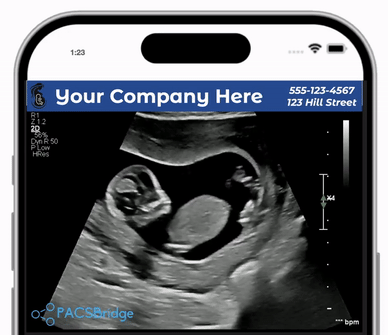The Hospital's Dilemma: Why Sharing Obstetric Images Isn't Always Simple
In an age where sharing every moment of our lives has become the norm, it's natural for expectant parents to want to share images of their unborn child. However, hospitals and medical professionals often find themselves in a challenging position when it comes to sharing obstetric ultrasound images. Let's explore the reasons behind this caution and why it's more complex than it might seem at first glance.
Safety of Personal Identifiable Information (PII)
One of the primary concerns for hospitals is the protection of patients' personal identifiable information. Ultrasound images (even printed ones) often contain sensitive data such as names, dates of birth, and medical record numbers. Once these images leave the secure hospital environment, there's a risk of this information being exposed, potentially leading to privacy breaches or identity theft.
Lack of Control Over Image Distribution
When hospitals share images directly with patients, they lose control over where these images end up. In our interconnected digital world, a single image can be shared countless times across various platforms. This widespread distribution can pose risks not just to patient privacy, but also to the hospital's reputation if images are misused or misinterpreted.
Medical Purpose vs. Entertainment
As Dr. Robyn Horsager-Boehrer points out in her article (references below), ultrasounds are primarily medical tests, not entertainment. Hospitals are concerned that treating ultrasounds as photo opportunities might undermine their medical significance. There's a worry that patients might prioritize getting "pretty pictures" over the crucial health information these tests provide.
Resource Allocation
Hospitals are often busy, high-pressure environments. Taking the time to prepare and share ultrasound images for non-medical purposes can detract from other critical patient care activities. In a system where every minute counts, this additional task can be seen as a luxury they can't afford.
Potential for Misinterpretation
When ultrasound images are shared without proper medical context, there's a risk of misinterpretation. What looks concerning to an untrained eye might be perfectly normal, and vice versa. This can lead to unnecessary anxiety or false reassurance for expectant parents.
Quality Control
As Dr. Horsager-Boehrer's article mentions, not all ultrasound images are clear or "pretty." Hospitals might be hesitant to share images that don't meet certain quality standards, fearing they might cause unnecessary concern or disappointment.
The Balancing Act
Despite these concerns, it's important to acknowledge the profound emotional impact that seeing ultrasound images can have on expectant parents. It's a balancing act between maintaining medical professionalism and safety, and catering to the natural desire of parents to connect with their unborn child.
Moving Forward
As technology evolves, we're seeing solutions emerge that address many of these concerns. Secure image-sharing platforms like PACSBridge offer a way to share images safely, protecting patient information while still allowing parents to experience the joy of seeing their baby.
These platforms can automatically remove or obscure sensitive information, provide secure access controls, and ensure that images are shared in a context that emphasizes their medical nature. They also streamline the sharing process, reducing the burden on busy hospital sonographers.
In conclusion, while hospitals' caution about sharing obstetric images is well-founded, there are ways to address these concerns. By adopting secure, purpose-built solutions, we can create a win-win situation - maintaining the integrity and purpose of medical imaging while still allowing parents to form those crucial early bonds with their unborn children.
See more about how PACSBridge.com can help

Prenatal bonding, Ultrasound image sharing, Maternal-fetal attachment, Pregnancy psychology, Emotional connection during pregnancy, Reducing pregnancy anxiety, Family bonding in pregnancy, Parental involvement in pregnancy, Ultrasound technology, Prenatal care, Fetal development visualization, Pregnancy stress reduction, Paternal bonding, Prenatal psychology, Secure ultrasound image sharing, Benefits of ultrasound sharing, Parent-child bond formation, Pregnancy experience enhancement, De-identified ultrasound images, Pacsbridge ultrasound sharing